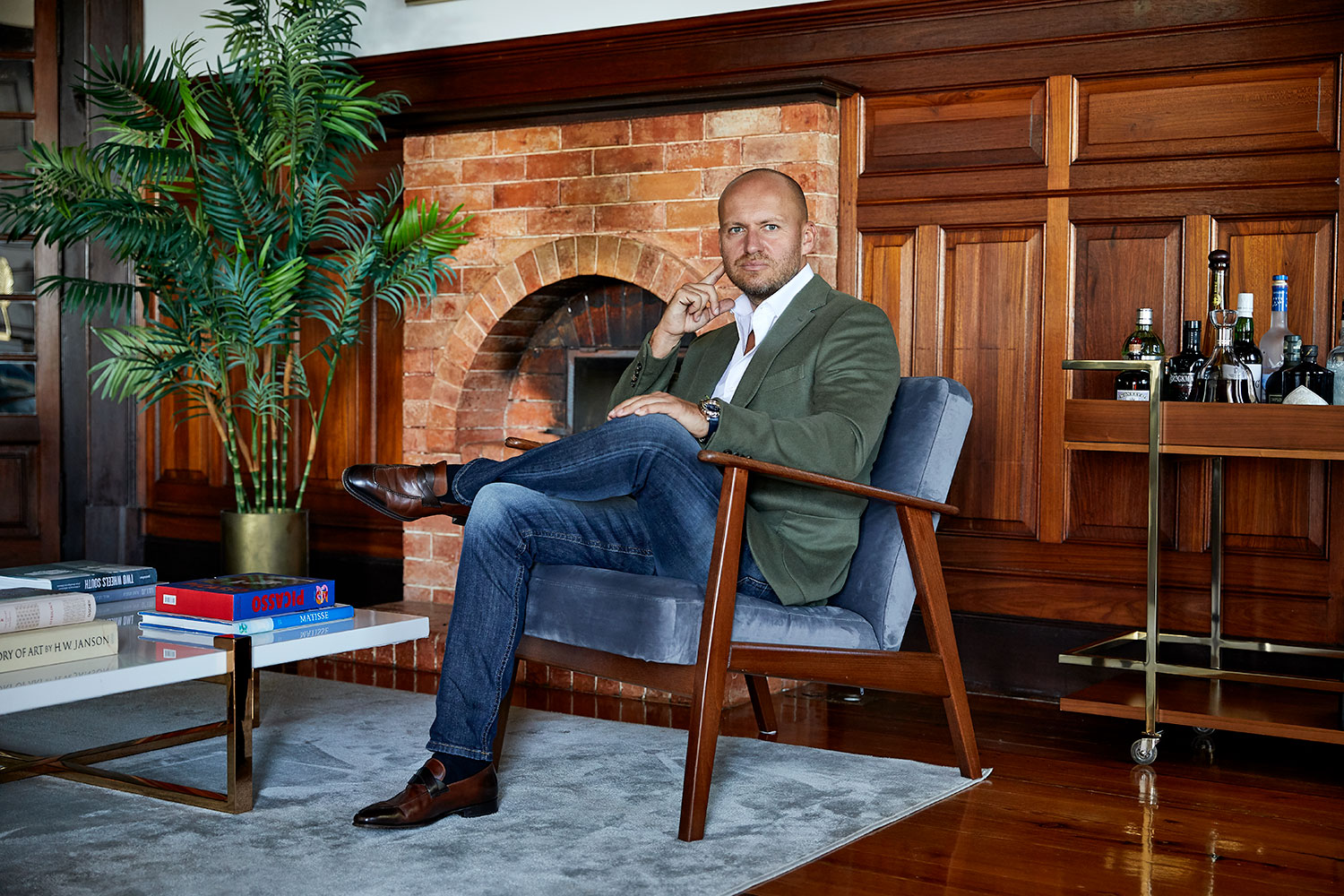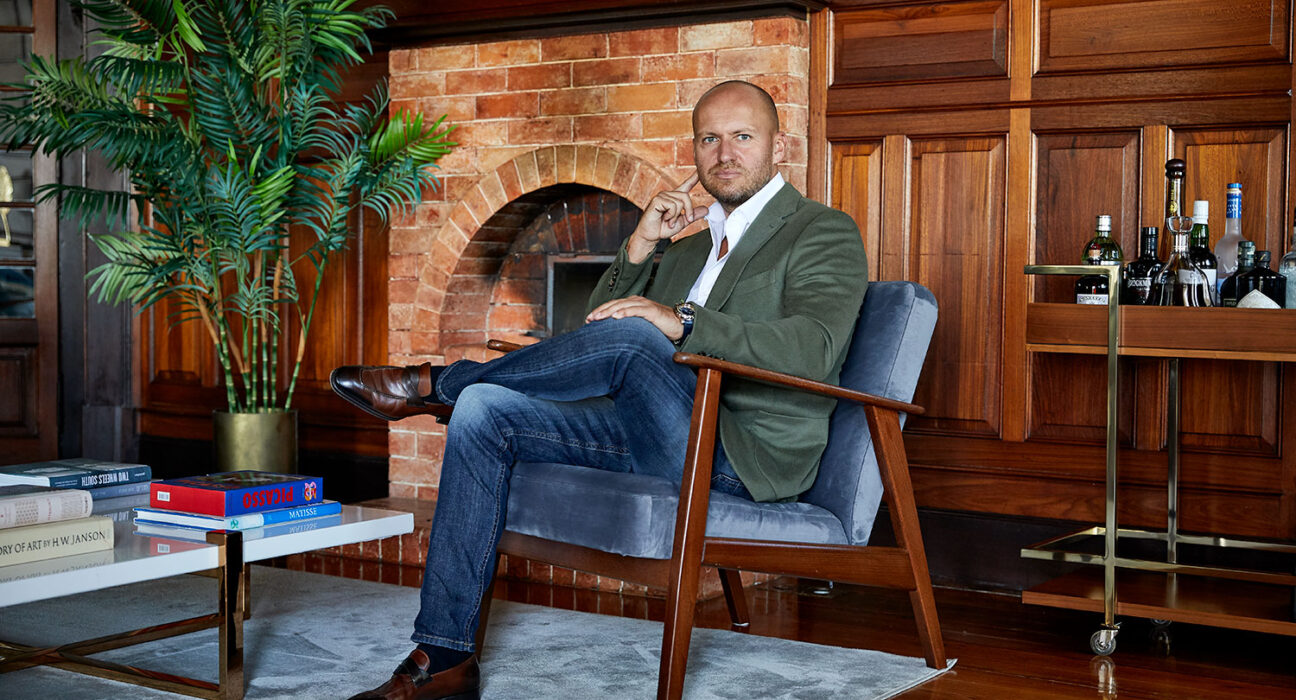
Based between Poland and France, Artur Trawinski harbors a strong attachment to Eastern European art, particularly Abstract Expressionism of the 1960s and its Polish practitioners, both emerging and established.
Five years ago, the cosmetics entrepreneur founded the nonprofit European ArtEast Foundation with the aim of commissioning and promoting Eastern European artists who are all too often underrepresented in the West. He told Artnet News, “I wanted to do something philanthropic and give back to the Eastern European art world, the discovery of which has given me so much joy and pleasure.”
The foundation recently presented, in London, the world’s first survey of female Surrealists from Eastern Europe. The show charted the development of Surrealism from the 1930s to its present revival, highlighting notable Surrealists from Poland, the former Czechoslovakia, and the former Yugoslavia. The exhibition included painting, drawing, illustration, sculpture, and video works.
With nearly 400 works in his collection, Trawinski currently sits on the International Circle acquisition committee at the Centre Pompidou in Paris. We caught up with him to learn more about his transeuropean collecting journey.
What was your first purchase?
Although I collect art from various regions and have many international artists in my collection, I predominantly started with Eastern European artists. Among the first artists in my collection is the multi-talented Polish artist Tadeusz Kantor—a legend of theater, photography, stage design, and, in my opinion, one of the most remarkable Abstract Expressionist painters of all time.
Works by Tadeusz Kantor belonging to Artur Trawinski. Photo: Tomasz Domżał. Courtesy of Kantor Estate and Artur Trawinski Collection.
What was your most recent purchase?
Some of my recent purchases are young artists from Eastern Europe, especially young geometric artists. An artist I recently purchased from Jecza Gallery—a young and dynamic gallery in Romania—is Vladiana Ghiulvessi. She is strongly following in the footsteps of Henryk Stażewski, Victor Vasarely, Julian Stanczak, Imre Bak, and Julije Knifer—artists I’ve been collecting for many years.
Artwork by Vladiana Ghiulvessi. Photo: Tomasz Domżał. Courtesy of the artist and Artur Trawinski Collection.
Tell us about a favorite work in your collection.
I don’t have a favorite work; I tend to develop a special interest and commitment to certain artists. I own a very large collection of works by Jan Ziemski, a largely undiscovered Polish geometrical artist from the Zamek Group, in whom I see incredible and unfulfilled potential.
Karel Appel’s sculpture L’homme (1966). Photo: Tomasz Domżał. Courtesy of the artist and Artur Trawinski Collection.
I’ve deeply admired and collected Wojciech Fangor’s work for years, an artist who only recently reached international recognition and sells at auction for millions of dollars. I am also very committed to some of my darker and heavier works by the Expressionists Karel Appel, Jan Lebenstein, and Alfred Lenica.
Works by Jan Ziemski in Artur Trawinski’s home. Photo: Tomasz Domżał. Courtesy of the artist and Artur Trawinski Collection.
Which works or artists are you hoping to add to your collection this year?
I am always discovering and rediscovering artists that inspire me and move me. One of the biggest projects my foundation presented and produced independently to this day is an immense, museum-quality exhibition at Cromwell Place in London, which ran throughout the month of April. “I saw the other side of the sun with you: Female Surrealists from Eastern Europe” is impressively curated by the renowned Anke Kempkes and organized and produced magnificently by my good friend and the foundation’s director, Jonathan Tybel.
Installation view, “I saw the other side of the sun with you,” Cromwell Place, London. Commissioned by European ArtEast Foundation.
Commissioning this show opened my eyes to many previously undiscovered Surrealist-inspired artists, including the Polish artist Maria Anto, the Serbian artist Milena Pavlović-Barili, and the incredible Wahl Sisters from Warsaw. I was also reminded of the incredible and undeniable cultural influence of international superstars Erna Rosenstein and Alina Szapocznikow, both of whom are also featured in the exhibition. These artists left an incredible legacy, benefiting not only Eastern European culture, but also the feminist movement.
What is the most valuable work of art that you own?
First of all, let me say right away, that I am a passionate and dedicated collector. I am dedicated to my beliefs and ideas, but I rarely like to talk about the monetary value of my collection. Considering that I already collect on a large scale, I founded the European ArtEast Foundation five years ago to promotes often underrepresented Eastern European art and artists. Besides collecting, I wanted to do something philanthropic and give back to the Eastern European art world, the discovery of which has given me so much joy and pleasure.
Victor Vasarely, Kiruna (1952–1962). Photo: Tomasz Domżał. Courtesy of Fondation Vasarely and Artur Trawinski Collection.
Where do you buy art most frequently?
I like to support young and independent galleries that I also have personal relationships with. Andrei Jecza is a cool young gallerist with great taste who introduced me to Vladiana Ghiulvessi, a promising young Romanian artist that I like a lot. Another great gallery, specializing in Op Art, is the highly respected gallery of Patrick Derom in Belgium. This is where I bought one of my most valuable pieces—one of Victor Vasarely’s most important works. Besides that, auction houses—big and international or niche and local. You can often find really under-appreciated gems at auction houses.
Artwork by Henryk Stazewski. Photo: Tomasz Domżał. Courtesy of the artist and Artur Trawinski Collection.
Is there a work you regret purchasing?
Some works I am of course more attached to, as they have greater emotional value to me, and some works obviously have less. I am passionate and emotional when it comes to collecting. Although I can sometimes be a little impulsive, I do not regret acquiring any of the works in my collection. Each and every purchase was meaningful to me at that time in my life and had my full attention while discovering it.
Artwork by Julian Stanczak. Photo: Tomasz Domżał. Courtesy of the artist and Artur Trawinski Collection.
What work do you have hanging above your sofa? What about in your bathroom?
All the artworks from my collection rotate regularly, but above the sofa is a place for favorites, such as the one I have hanging there right now, which is a Victor Vasarely, and just before that, a work by Julian Stanczak. I also like to hang arrangements by Jan Ziemski in important places in my homes. I do not really hang any significant art in my bathrooms—this is where I keep art publications and art magazines.
Yellow and black centerpiece by Julije Knifer. Photo: Tomasz Domżał. Courtesy of Artur Trawinski Collection.
What is the most impractical work of art you own?
I keep my collection as mobile and adventurous as I am myself. Artworks from my collection frequently travel between their locations at my house or even between my residences. To me, my collection feels like a living and breathing organism and is a strong part of my ecosystem. It has its own patterns of behavior and its own moods.
What work do you wish you had bought when you had the chance?
I deeply regret not buying a work by Jean-Michel Basquiat. However, I was only a few years old when it was offered to me.
If you could steal one work of art without getting caught, what would it be?
There are so many! Besides Tadeusz Kantor’s “Emballages” from the 1980s, which I think are genius, I actually wouldn’t mind getting away with stealing some of the mesmerizing avant-garde works of Alina Szapocznikow, or some of the beautiful and dreamy works of Toyen or Maria Anto from our current exhibition.
Follow Artnet News on Facebook:
Want to stay ahead of the art world? Subscribe to our newsletter to get the breaking news, eye-opening interviews, and incisive critical takes that drive the conversation forward.

